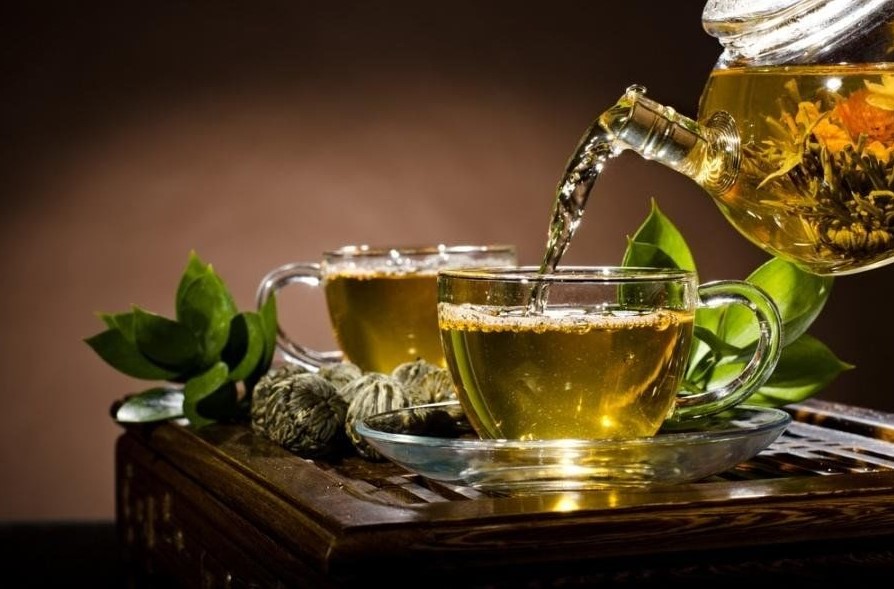
Tea Guide: Rhythm, Taste, Culture
The effect of tea on the body: science over a cup
Tea is a complex cocktail of bioactive substances. Caffeine and L-theanine in green tea work in tandem: the first invigorates, the second relieves tension. GABA (gamma-aminobutyric acid) in fermented varieties, such as gaba oolong, helps fight stress without losing concentration. Antioxidants in white tea and rooibos protect cells, and pu-erh with its post-fermentation improves metabolism. Even in the evening, you can choose tea without caffeine: anchan or hibiscus stabilize blood pressure and prepare for sleep.
Seasonality and time of day: the rhythm dictated by tea
The morning begins with green tea or shu pu-erh. Their astringency and even vigor awaken the brain. During the day, red tea (dian hong) or light oolong (tie guan yin) maintain energy without overload. In the evening, aged shu pu-erh or white tea (yue guan bai) with their soft woody aftertaste are used.
Seasons also matter:
- Spring is the time of the Qingming harvest of green teas.
- Summer offers cooling white varieties and yellow teas.
- In the fall, dark oolongs (da hong pao) are chosen to warm up.
- In winter, preference is given to pressed shu pu-erh and red teas, which warm better than a blanket.
Processing technologies: from leaf to cup
- Fermentation determines the category: sheng pu-erh (natural fermentation) preserves freshness, shu pu-erh (artificial aging) gives a thick “oil” taste.
- Roasting of oolongs affects the aroma: milk oolong is treated with milk extract, and da hong pao is smoked over coals.
- Oxidation of white tea is minimal, which preserves the tea buds in their original form.
Main varieties: from classic to exotic
- Puer teas: shu has a dense texture with notes of chocolate; sheng has a herbaceous-honey profile.
- Oolongs: tie guan yin (floral) is contrasted with da hong pao (smoked and spicy).
- Red teas: dian hong with honey notes, qimen hongcha, known as “tea cognac”.
- Exotic: anchan (blue tea), kukicha (branch Japanese), matcha (powdered elixir).
The art of brewing: from temperature to utensils
- Steeping is a method of short brewing in clay utensils. It reveals the layers of flavor of oolongs and pu-erhs.
- Temperature: from 75 to 85°C for green tea, up to 95–100°C for red.
- A French press and a thermos are considered taboo for elite varieties: they increase bitterness and kill subtle notes.
Mistakes that spoil tea
- Tea on an empty stomach: green varieties irritate the stomach.
- Strong infusion at night: even shu pu-erh over 10 years old can disrupt sleep.
- Storage in transparent containers: light and moisture trigger oxidation.
- Buying flavored teas: “strawberry oolong” often contains synthetic additives.
Tea in culture: from Gongfu-cha to the Russian samovar
The Chinese tea ceremony Gongfu-cha is a meditation with multiple infusions, where every movement has meaning. In Russia, tea drinking with gingerbread and a samovar has become a symbol of hospitality. In the UAE, boutiques like Cantata Tea merge traditional and modern tea culture, offering tastings and blends tailored to Middle Eastern palates.
How to choose quality tea: expert advice
- A whole leaf is a sign of quality (avoid tea dust).
- The aroma should be natural: longjing has roasted seeds, sheng puer has the freshness of a flowering meadow.
- Check the freshness: green tea can be stored for up to a year, puer can be stored for decades.
- Avoid mass brands: look for small suppliers with direct contracts in China.
Tea is a dialogue between nature and culture. From qingming harvesting to multiple brewing, each stage reminds you: life is worth slowing down. Experiment with varieties, find your own tea rhythm, and let each cup become a step towards harmony.
